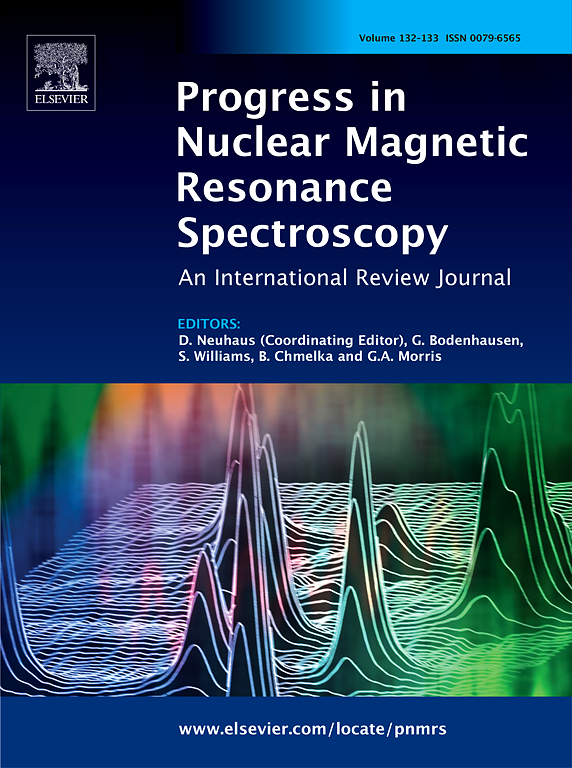计算13C核磁共振化学位移的计算协议
IF 8.2
2区 化学
Q2 CHEMISTRY, PHYSICAL
Progress in Nuclear Magnetic Resonance Spectroscopy
Pub Date : 2019-06-01
DOI:10.1016/j.pnmrs.2019.05.004
引用次数: 50
摘要
本文综述了13C NMR化学位移计算的最新研究成果(小分子、饱和、不饱和和芳香化合物、杂环、功能衍生物、配位配合物、碳阳离子和天然产物),特别关注理论背景和准确性,后者涉及溶剂效应、振动修正和相对论效应。本文章由计算机程序翻译,如有差异,请以英文原文为准。

Computational protocols for calculating 13C NMR chemical shifts
The most recent results dealing with the computation of 13C NMR chemical shifts in chemistry (small molecules, saturated, unsaturated and aromatic compounds, heterocycles, functional derivatives, coordination complexes, carbocations, and natural products) are reviewed, paying special attention to theoretical background and accuracy, the latter involving solvent effects, vibrational corrections, and relativistic effects.
求助全文
通过发布文献求助,成功后即可免费获取论文全文。
去求助
来源期刊
CiteScore
14.30
自引率
8.20%
发文量
12
审稿时长
62 days
期刊介绍:
Progress in Nuclear Magnetic Resonance Spectroscopy publishes review papers describing research related to the theory and application of NMR spectroscopy. This technique is widely applied in chemistry, physics, biochemistry and materials science, and also in many areas of biology and medicine. The journal publishes review articles covering applications in all of these and in related subjects, as well as in-depth treatments of the fundamental theory of and instrumental developments in NMR spectroscopy.

 求助内容:
求助内容: 应助结果提醒方式:
应助结果提醒方式:


